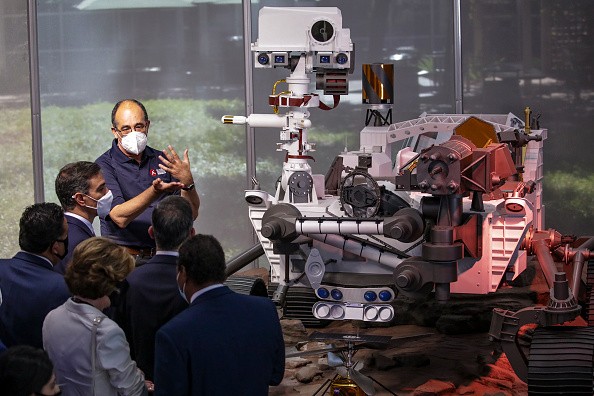NASA is offering you the chance to train the artificial intelligence that's powering their rovers on Mars.

The project, which NASA calls AI4Mars, is asking people to help the agency identify so-called scientifically interesting features in photos taken by the Perseverance Mars rover, reports Space.com.
By helping the AI recognize these features on the Red Planet, NASA says it will aid in the improvement of the Mars rover's algorithm.
According to the NASA Jet Propulsion Laboratory (JPL) (the one managing both the missions of the Curiosity and Perseverance Mars rover), the effort is a continuation of a project launched last year.
In 2020, citizen scientists helped analyze almost half-a-million images taken by the Curiosity rover using a special tool. This tool helped them identify land features that NASA JPL used to plan out the routes of the rovers.
This year, AI4Mars has improved enough to identify more than just sand and rocks, but very specific types of them scattered all across the Red Planet.
As per the original Space.com report, the artificial intelligence algorithm is now able to identify "more refined" details such as nodules (BB-sized balls often made of minerals) and "islands" of rocks on the Martian surface.
The project is hosted on Zooniverse.org. As of this writing, it is at 28% total completion, and has received contributions from over 12,400 volunteers.
NASA is currently deep into exploring Mars with the Perseverance and Curiosity rovers. Recently, Perseverance took new photos of the Martian surface after needing a temporary shutdown due to the solar conjunction (when Mars went behind the sun and was briefly hidden from Earth's view.
Read also: NASA Mars Recon Orbiter Captures Perseverance from the Red Planet-Here's How to Track Rover Location
How Does This NASA Project Work, Exactly?
So far, NASA has improved the ability of the Perseverance rover's artificial intelligence to identify specific land features in its route. Its accuracy sits at 98% courtesy of the project's first phase which involved the Curiosity rover.
However, the ones piloting the rovers on Earth could always use an upgrade. Their main goal with AI4Mars is to further reduce the time it takes the images to be sent to Earth and back to the rover in the form of route planning instructions.

Despite the high accuracy of the algorithm right now, it can still fail to identify specific topographic features which could be dangerous for the Mars rover to drive on.
Since the rover alone already costs $2.7 billion according to Planetary.org, NASA is understandably not taking any chances when it comes to driving it on the surface of an alien planet.
Why Is NASA Asking Civilians for Help?
If there's something you must know about artificial intelligence, it's that it does its best learning if you feed it a constant amount of data.
NASA JPL themselves said that it would be impossible for a team of even the world's best scientists to look at the rover photos with intense scrutiny. That's where data from the citizen scientists can come in and significantly reduce the route planning time for the rover.
This article is owned by Tech Times
Written by RJ Pierce
ⓒ 2025 TECHTIMES.com All rights reserved. Do not reproduce without permission.




